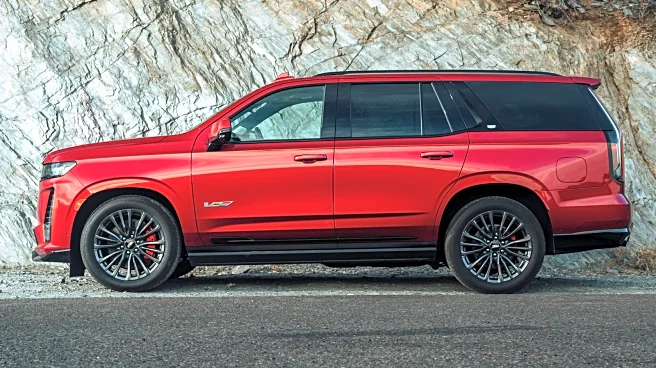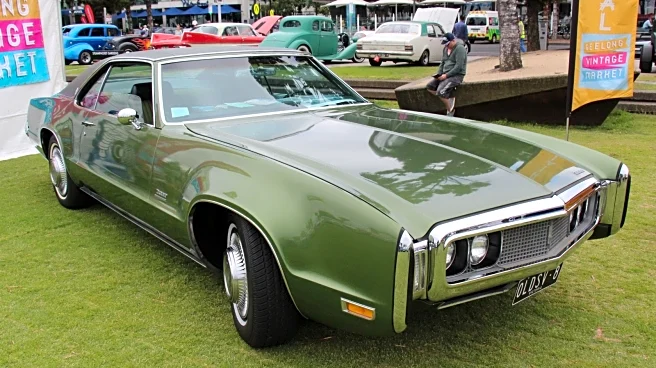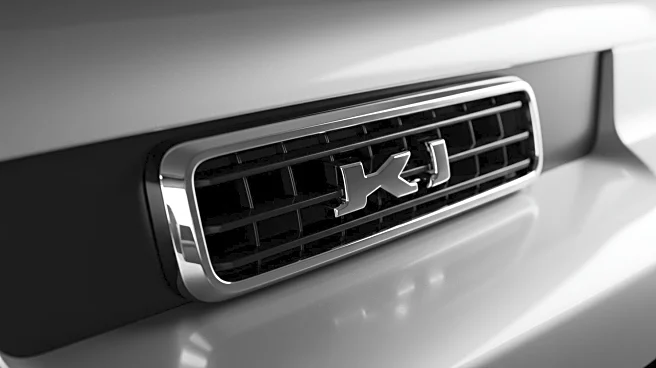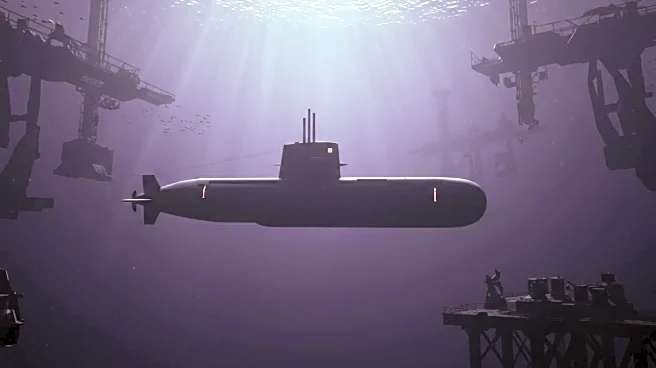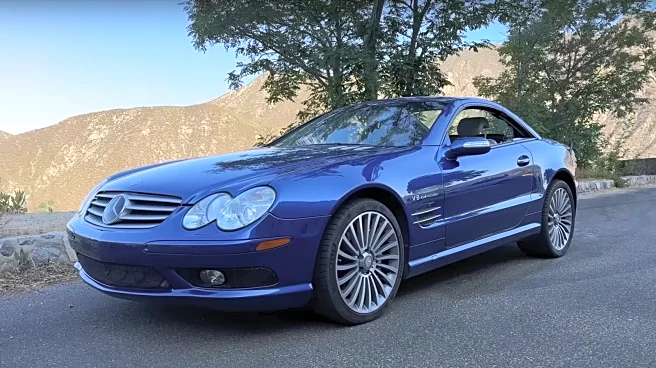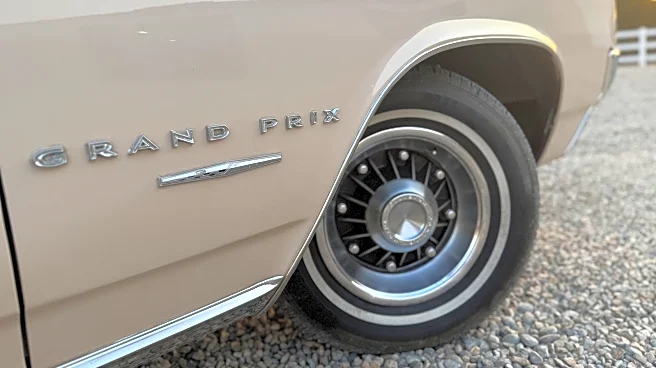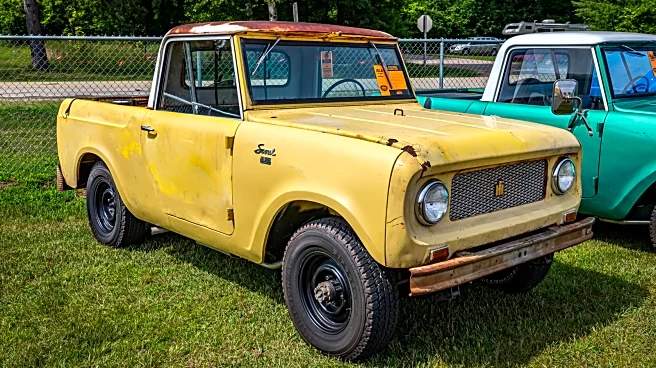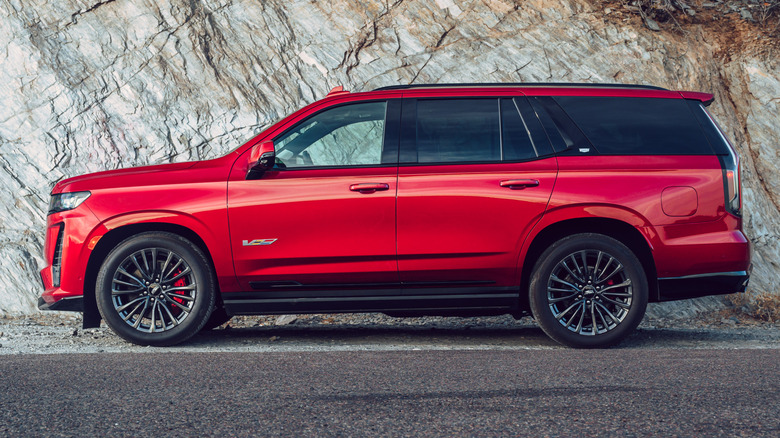
The Chevy Corvette is a car that has been synonymous with V8 performance for the past 70 years. Currently in its eighth generation, the Corvette has seen huge gains from its small-block powertrain since its inception. It has also made numerous donations to the greater good of General Motors. The list of cars with Corvette engines is littered with well-known examples like the current Cadillac CT5-V Blackwing and last-generation Chevy Camaro ZL1. But did you know Saab once sold a car with a Corvette engine?
Not to mention other long-gone brands like Buick and Pontiac.
Today, we'll be looking back as far as the C4 Corvette, a long-running Corvette generation built between 1984 and 1996. Circa 1994, the Corvette was packing a 5.7-liter V8, dubbed the LT1, rated for 300 horsepower at 5,000 rpm and 340 lb-ft of torque at 3,600 rpm. Today, the 6.2-liter LT2 V8 in the C8 Corvette Stingray delivers 490 hp at 6,450 rpm and 465 lb-ft of torque at 5,150 rpm.
That's quite the uptick in performance over four generations of Corvette production and paints a picture of an automaker hard at work making sure its iconic sports car remains at the forefront of high performance. Given all that engineering effort, it's no surprise General Motors would want to spread the wealth and development costs over more than one vehicle. That's how these five cars came to have Corvette engines despite not carrying the nameplate.
Read more: 10 Luxury Cars That Are Cheap To Maintain
Buick Roadmaster Estate
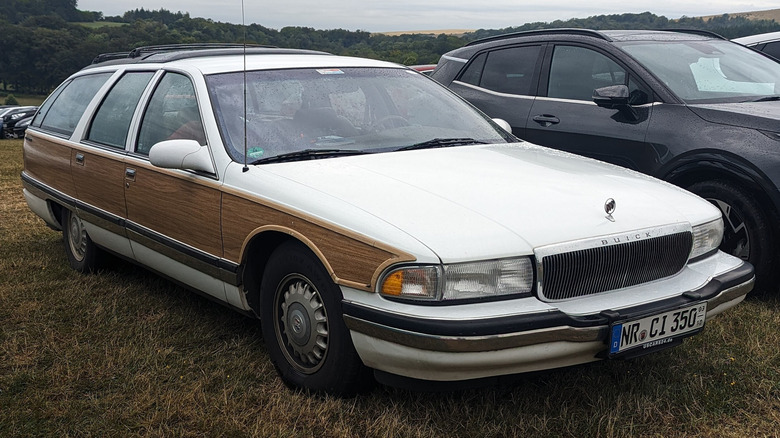
Today, seeing a Buick Roadmaster Estate on the road can be shocking. That Light Colonial Oak woodgrain vinyl applique running down the sides and bubble-icious body styling is so outrageous in today's crossover-heavy world that a massive faux-wood-trimmed station wagon can seem downright bizarre. And when this last run of GM body-on-frame full-size vehicles debuted in 1991, the reception wasn't much better. Sedan variants used by police departments earned the unfortunate nickname of Shamu due to the rounded shape and typical white-and-black design.
However, gearheads know there is more to the Roadmaster Estate than rude jokes. Specifically, the 1994 through 1996 models, as these came with a naturally aspirated 5.7L LT1 V8 derived from the C4 Corvette. Replacing the earlier Roadmaster's 5.0L V8, power jumped from 170 hp to 260, pushing the 0-60 sprint down into the 7-second range. Not bad for an eight-passenger station wagon with a glass Vista Roof and the ability to tow 5,000 pounds.
Now, the Buick made 40 fewer horsepower than the period Corvette due to swapping aluminum cylinder heads for iron units, but torque was only down by 10 pound-feet, and the 'Vette certainly could not claim 92 cubic feet of family-friendly cargo space. For enthusiasts considering buying one of these big old Corvette-powered Buicks, look to actor Dax Shepard for inspiration. His wood-paneled 1994 wagon makes a whopping 700 horsepower and is a shoo-in for inclusion on any list of coolest American station wagons ever built.
Chevrolet SSR
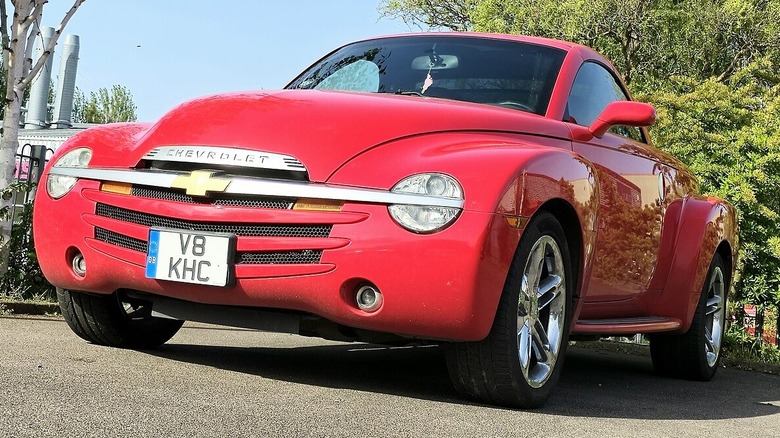
The Chevy SSR didn't always have a Corvette engine, but initial rollout details of this wacky pickup truck roadster changed that. When Chevy unveiled the SSR with bulging fenders, huge wheels, and cartoonish styling, it seemed unlikely to reach production. However, in 2003, the SSR did in fact arrive in dealers with its concept car vibe intact. What it didn't have was an impressive powertrain, as initial models came with a 300-hp 5.3-liter V8 and a four-speed automatic transmission.
Fortunately, Chevrolet quickly corrected course, releasing the 2005 SSR with a 6.0-liter LS2 V8. Like most cars with a Corvette engine, the SSR was slightly detuned in the horsepower metric at 390 versus 400 in the C6 Corvette. But the SSR actually made slightly more torque than its Corvette donor, with 405 lb-ft versus 400. The updated SSR also had an option for an available Tremec six-speed manual to make it an actual enthusiast vehicle. The SSR was still a truck at heart and weighed in at 4,746 pounds, so the 2005 model's 0-60 time of 5.5 seconds was 1.2 seconds off the pace of a 2005 Corvette, but it did best the earlier SSR in this all-important metric.
Granted, Chevrolet was not advertising the SSR as having a Corvette engine, which made sense as it was technically a hardtop roadster pickup truck. But underneath you would find a Torsen limited-slip diff, a double A-arm suspension up front, and a five-link rear, axle all aiming to keep the SSR as sports car-like as possible.
Cadillac Escalade-V
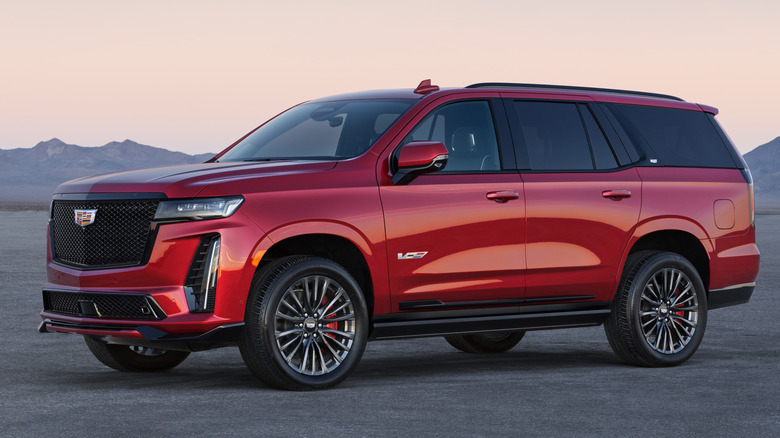
Cadillac's Escalade-V is the definition of an elite SUV, what with its $150,000 price point, exclusive body work, and giant 22-inch wheels. There's also the Corvette engine mounted up front, albeit a highly modified Corvette engine. Based on the fifth-generation LT4 Chevy small-block V8, it makes 682 hp and 653 lb-ft of torque in its Escalade V application. That makes it the most powerful production Cadillac ever and one capable of sprinting to 60 mph in 4.3 seconds, which is quite the pace given it weighs in at 6,407 pounds in long-wheelbase ESV spec.
To get there, Cadillac blends parts from the LT4 V8 in the current CT5-V Blackwing with the LT5 V8 from the C7-generation Corvette ZR1. Known internally as the LT4.5, the configuration features a 2.65-liter supercharger, cast stainless-steel exhaust manifolds, and the ability to run the exhaust outlets in stealth mode for early neighborhood departures or V-Mode for maximum effect. As far as cars, or SUVs, with Corvette engines go, the Escalade-V blows the base Corvette mill out of the water in output, as the current Stingray makes a mere 490 hp and 465 lb-ft of torque, though it is naturally aspirated.
Of course, this big Caddy is the polar opposite of a Corvette with three rows of seating, Zebrawood cabin trim, a 36-speaker audio system from AKG, and a giant curved OLED infotainment interface. Toggle the Z-Mode button with adjustable engine sound, however, and you can quickly be reminded that this cushy Cadillac has the heart of a Corvette.
Saab 9-7X Aero
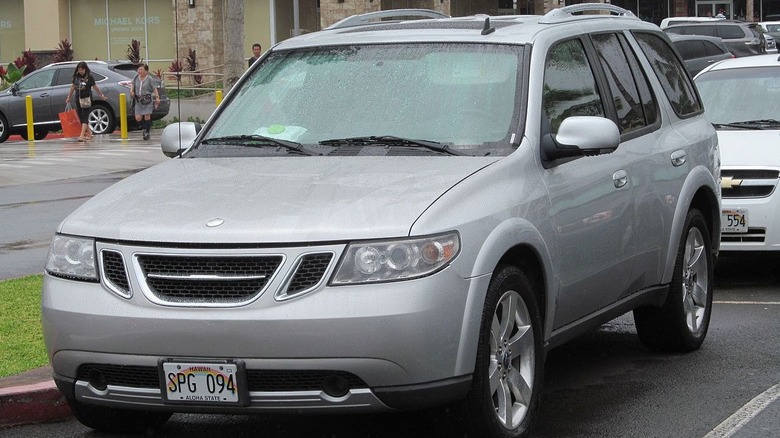
The reasons behind why the Saab 9-7X failed are many, but looking back, it may not be surprising that an SUV with the Swedish automaker's badges stuck on a Chevy Trailblazer was anything but a big hit. Produced from 2005 to 2009, most of the 9-7X lineup came with a 275-hp straight-six or a 5.3L V8 making 300 hp. That changed in 2008 when General Motors, which owned Saab at the time, rolled out a new Aero variant.
Packing the same 6.0-liter LS2 V8 found in the Corvette C6, it featured cold-air induction and a special composite intake manifold. Output measured 390 horsepower at 6,000 rpm and 395 lb-ft of torque at 4,000 rpm, which was only 10 hp off the mark set in the C6. Special features included a lowered and tuned suspension, larger front stabilizer bars, upsized brake rotors with high-performance pads, a heavy-duty rear axle, and a Torsen limited-slip differential.
Exclusive Carbon Flash Metallic paint was applied along with Aero cabin embroidery and V-rated tires for the 20-inch wheels. Saab claimed a sub-6-second 0-60 time, and objectively, the 9-7X Aero was an impressive SUV. It could even tow 6,600 pounds. But considering it didn't last past 2009, consumers disagreed. The only Swedish car to ever have a Corvette engine, these Saab 9-7Xs are certainly unusual, but for Corvette fans, they represent an interesting chapter in the sports car's long history.
Pontiac Solstice Mallett
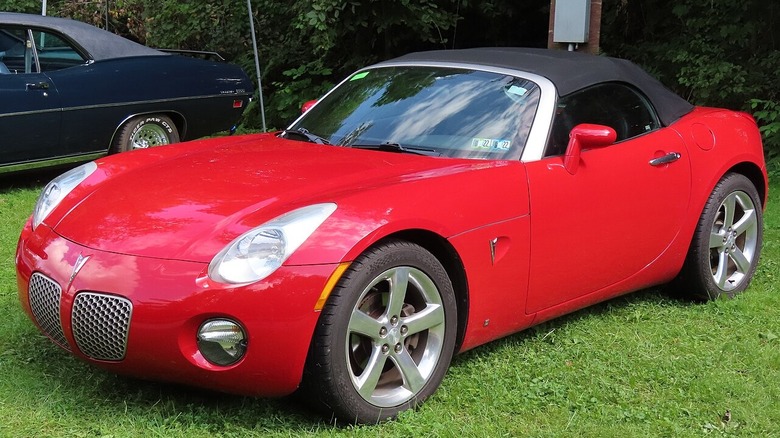
Before Pontiac was relegated to the automotive dustbin, it gave us the Solstice, easily one of the most iconic Pontiac convertibles to see production. Base models received a naturally aspirated 2.4-liter inline-four making 177 horsepower and 166 lb-ft of torque. The GXP model strapped on a turbocharger to bring both of those figures up to 260, enough for this roadster to clear 60 in 5.6 seconds. But, for those who couldn't resist the idea of stuffing a Corvette V8 under the hood of this little Miata competitor, there was the aftermarket Mallett version.
For around $51,000 with options, the Solstice Mallett came packing a 400-horse Corvette V8 with 400 lb-ft of torque, a lowered suspension with polyurethane bushings, a Corsa exhaust system, a serialized plaque, and "world famous Mallett body graphics" (according to Mallett). Period testing revealed the ability to light up the rear tires in the first three gears and a 4.4-second 0-60 mph sprint, 12.8-second quarter mile, and 1.02 g of lateral grip. That latter result was helped, in part, by the Michelin Pilot Sport tires.
If that wasn't enough, Mallett being Mallett offered even more power for the little Pontiac, like a naturally aspirated 427 cubic inch V8, or a turbocharged LS2 V8 cranked up to 600 hp. It's fun to imagine what that kind of power would translate to on the performance front for one of the more obscure cars to ever feature a Corvette engine.
Want the latest in tech and auto trends? Subscribe to our free newsletter for the latest headlines, expert guides, and how-to tips, one email at a time.
Read the original article on SlashGear.
